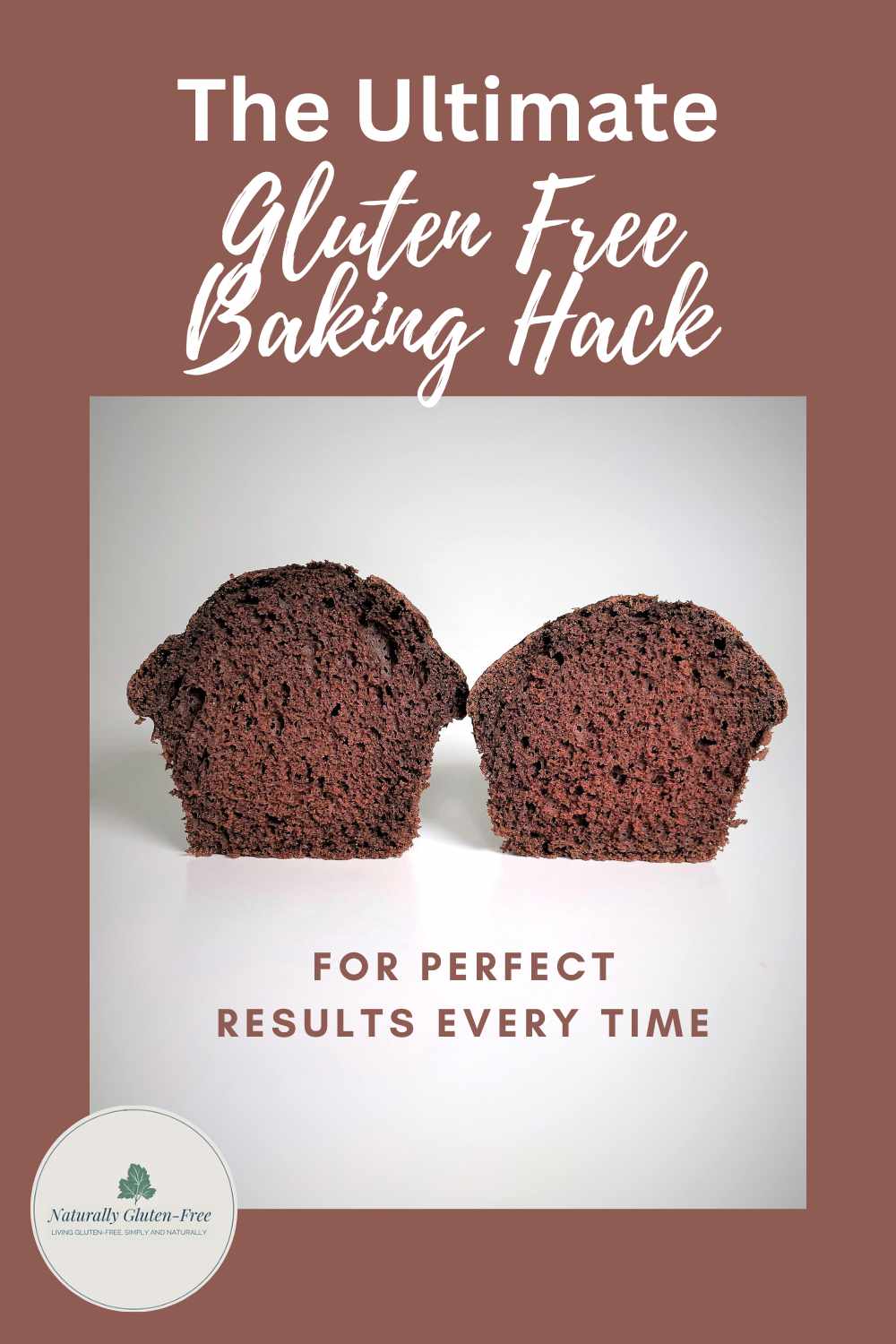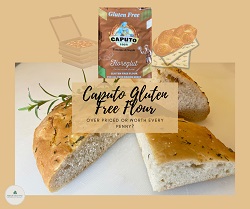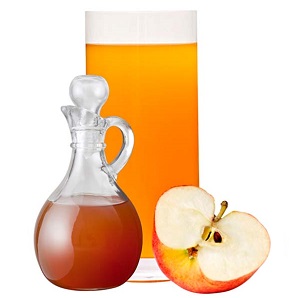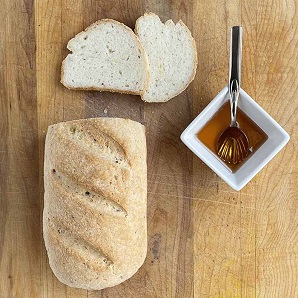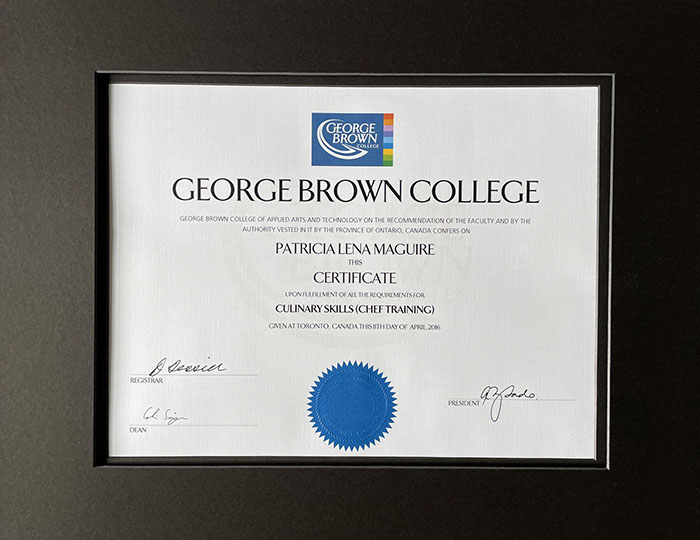- Home
- Gluten-Free Baking
- Baking Hack
The Ultimate Gluten Free Baking Hack for
Perfect Results Every Time
Are you frustrated by gluten free cakes that sink in the middle or gluten free quick breads that rise beautifully in the oven only to deflate into a dense disappointment when they cool?
Pin for Later
This one, unexpected gluten free baking hack will change your gluten free baking forever!
What Is The Gluten Free Baking Hack?
Are you ready? Here it comes…
Let your batter rest.
Almost no gluten free baking recipe will include this step, but it is the one thing that will make all the difference. I didn’t believe it myself until I put it to the test.
The Old Way
When I first learned to bake in home-ec class (yes I’m old enough to have taken home-ec) we were taught that when making cakes and other items that use baking powder or baking soda as a leavener, we needed to work quickly and get our batter into the oven as soon as possible. The reason for this we were told was that as soon as liquid is added to the batter, the baking powder and baking soda would start to work making bubbles to cause the cake to rise. If we were slow, the leavener would be used up before the cake got into the oven and it would have no rising power left.
Why Rest Your Gluten Free Batters and Doughs?
When I started gluten free baking I came across an unfamiliar notion; that gluten free batter and dough should rest before baking. The reason for this is that gluten free flour does not absorb moisture as quickly as wheat flour and this can result in a grainy texture and a lower rise. Resting gives the gluten free flour time to absorb the moisture giving the cake a softer mouth feel and a better rise.
But what about working quickly? What about the baking powder losing its power? Both of these things can’t be true. The only way to know for sure was to test it out for myself. So I did.
Is Chocolate Gluten Free? Health Benefits and Tips to Avoid Hidden Gluten
Discover which chocolates are truly gluten free, how to read labels, and what hidden ingredients celiacs need to watch for when choosing sweet treats.
This article is dedicated to chocolate and will give you all the ins and outs.
Test #1: Should You Let Gluten Free Cake
Batter Rest Before Baking
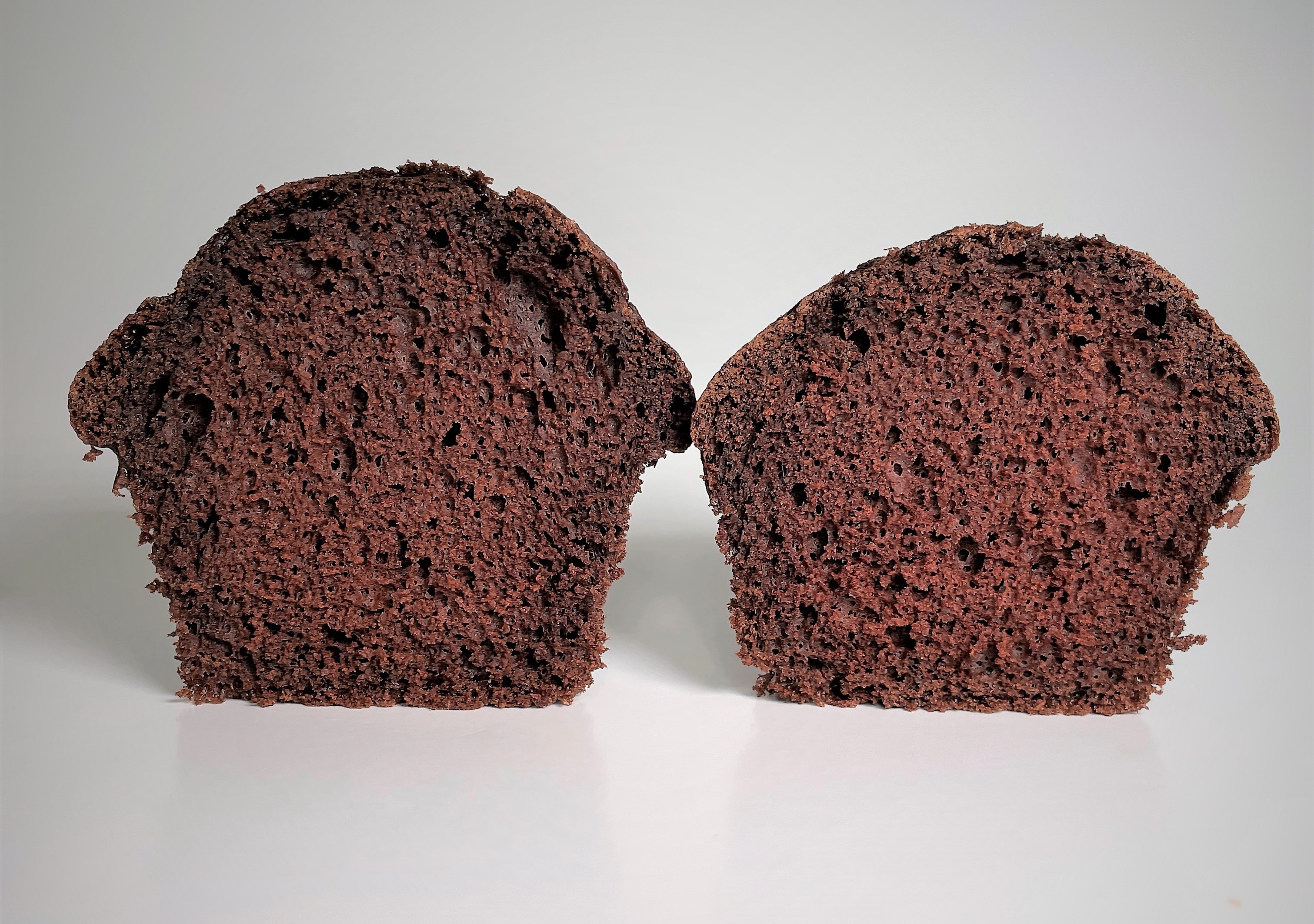 The cupcake on the left was baked after a 30 minute rest. The cupcake on the right was baked right away.
The cupcake on the left was baked after a 30 minute rest. The cupcake on the right was baked right away.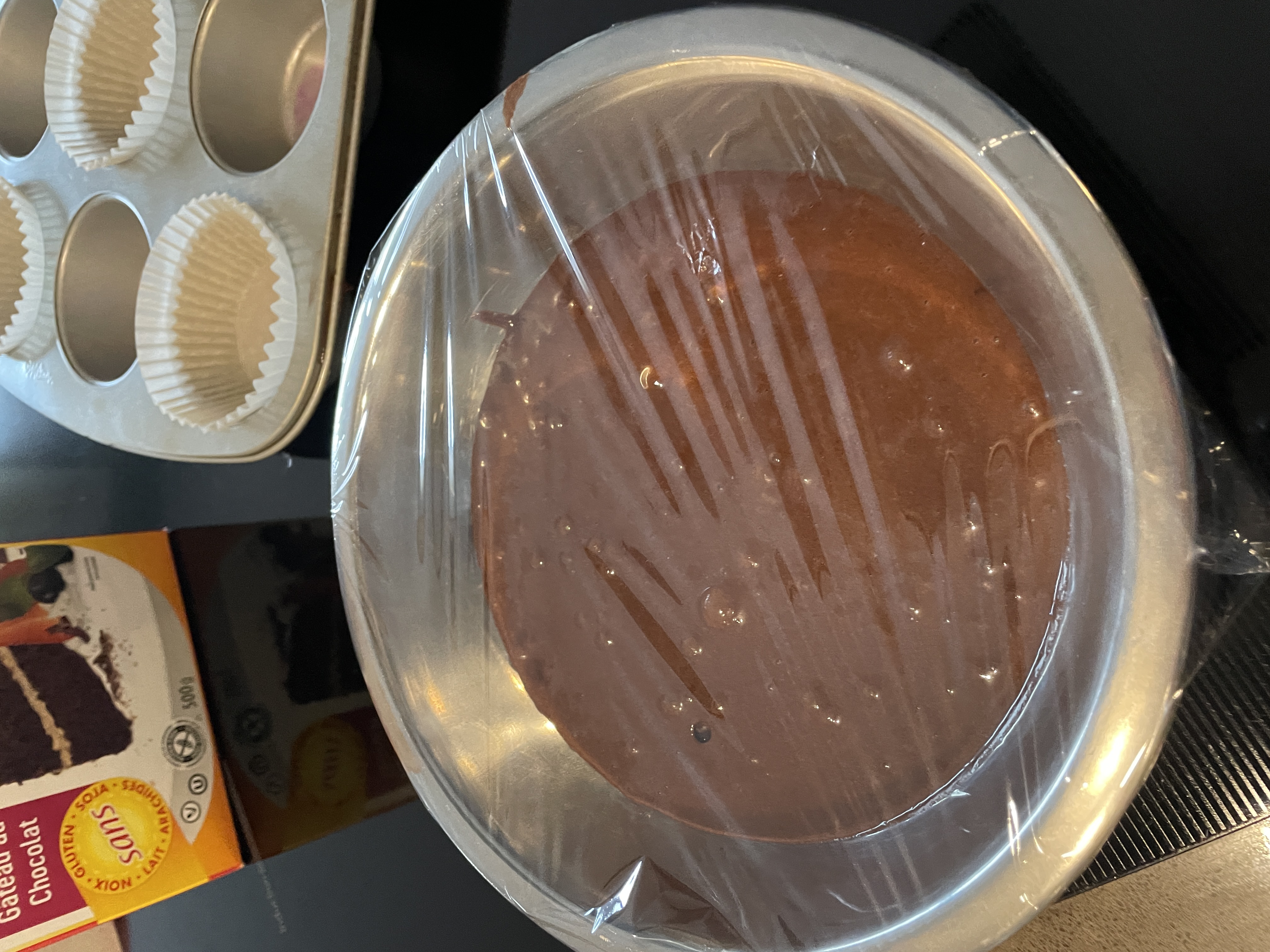
I decided the best way to test if this gluten free baking hack works on cakes was to make two sets of cupcakes. I used a Kinnikinnick chocolate cake mix and made it up according to the package instructions. Then I put half the batter into a bowl, covered it with plastic wrap and let it sit on the counter for 15 minutes. I put the other half of the batter directly into 6 muffin tins and right into the oven.
At the end of the 15 minute resting period, I put the rested batter into 6 muffin tins and put them into the oven.
The result? You can see for yourself that the rested cupcakes rose up higher. I got Hubby to be my taste tester and he thought the rested one had a nicer mouth feel. I agree. It’s not a huge difference, but there is definitely a difference.
The gluten free baking hack works for cake. Letting gluten free cake batter rest for 15 minutes before baking makes a cake that rises higher and has a nicer texture.
Test #2: Should You Let Gluten Free Pancake
Batter Rest Before Grilling?
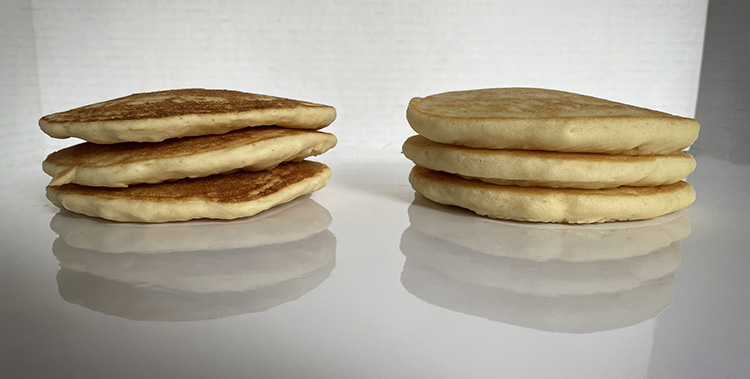 Pancakes on the left were grilled right away. Pancakes on the right were rested for 30 minutes.
Pancakes on the left were grilled right away. Pancakes on the right were rested for 30 minutes.For this test I used Bulk Barn gluten free pancake mix. I mixed it up according to the instructions then moved half the batter into a clean bowl and let it stand on the counter for 30 minutes. I cooked the other half of the batter right away, using exactly 1/3 cup of batter per pancake.
Caputo Fioreglut Focaccia Bake-Off
Interested in another side-by-side baking test? In this one I compared the renowned Caputo Fioreglut gluten-free flour from Italy to my favorite all-purpose blend. Caputo flour is considered by many to be the absolute best for gluten-free focaccia and pizza. The results were un-mistakeable!
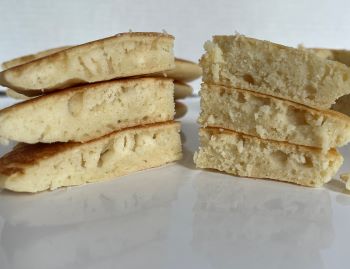 Pancakes on the left were grilled right away. Pancakes on the right were rested for 30 minutes.
Pancakes on the left were grilled right away. Pancakes on the right were rested for 30 minutes.I increased the time to see if 30 minutes would be too long and maybe my pancake batter would lose its rising power as I was warned it would so many years ago in home-ec.
The result? The pancakes made from the rested batter rose up higher. Hubby taste tested again and said the rested ones were better. I agree.
The gluten free baking hack works for pancake batter too. And, interestingly, a 30 minute rest is not too long. My gluten free pancake batter did not lose it’s rising power even after a half hour on the counter.
Test # 3: Should You Let Gluten Free
Biscuit Dough Rest Before Baking?
 The biscuit on the left was baked right away. The biscuit on the right was rested 30 minutes before baking.
The biscuit on the left was baked right away. The biscuit on the right was rested 30 minutes before baking.By this time I thought I knew how this would go, but wanted to try it with a dough to see if there would be any difference.
I used Duinkerken gluten free biscuit mix and made it up according to the package instructions. I wrapped half the dough in plastic wrap and let it sit on the counter for 30 minutes. I rolled and cut the other half and put the biscuits into the oven right away.
The result? As you can see, there is not much difference in the rise. The one that rested and the one that didn't are about the same.
Hubby did the taste test and thought he liked like one that went in right away better. I didn't really find much difference in taste or mouth feel. If you look at the picture you can see the crumb in the rested biscuit is a bit more even.
So, with biscuits, I would say it's up to you. Resting or not didn't make much difference.
How Long Should You Rest Your Gluten Free
Batter or Dough Before Baking?
I read lots of blogs that talk about this same gluten free baking hack and saw times anywhere between 10 and 30 minutes, and some say “at least 30 minutes”. I then turned to my America’s Test Kitchen: How Can It Be Gluten Free Cookbook, and they say to rest batters for 30 minutes.
My own testing shows that 30 minutes is not too long and does not interfere with the action of the baking powder or baking soda at all. Based on this, I would say you decide, but I would go for a resting time of about 30 minutes.
